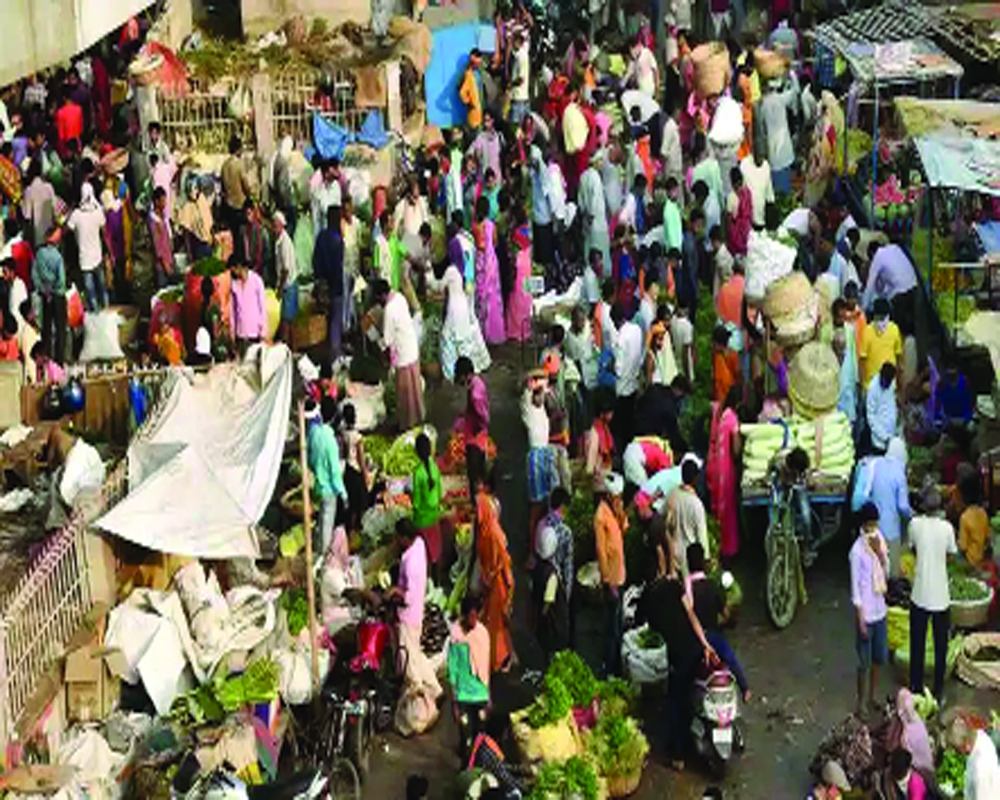The double-digit inflation is due to the rise in prices of mineral oils, basic metals, crude petroleum and natural gas, chemicals, food products etc
Recently, the office of the Economic Adviser, Department for Promotion of Industry and Internal Trade released the index numbers of wholesale price index for the month of September and November 2021 (final and provisional, respectively). The WPI based inflation rate (Y-o-Y) was reported as 14.23 per cent (provisional) over 2.29 per cent in November 2020. The rise in the rate of inflation is said to be due to rise in prices of mineral oils, basic metals, crude petroleum and natural gas, chemicals, food products etc. The rate has steadily risen over few months as November 2021 was the 8th straight month when the wholesale inflation has grown by double digits.
The other indicator of inflation, which Reserve Bank of India tracks under its mandate of keeping the rate at 4 per cent with a margin of 2 per cent on either side till March 2026 is the retail inflation or CPI. The data on CPI-based inflation is compiled by the Ministry of Statistics and Programme Implementation. The overall measure of CPI, including food and energy, commonly referred to as headline CPI has edged upto 4.5 per cent in October 2021 from 4.3 per cent in September, mainly due to spike in vegetable prices owing to crop damage because of heavy rainfalls in several states and fuel inflation which spiked due to rising international prices of liquefied petroleum gas and kerosene. Core inflation, which excludes volatile items such as food and fuel and is considered to be the indicator of underlying long-term inflation, has risen to 6.1 per cent in November 2021 increasing from 5.9 per cent in the previous month. The Monthly Review Report of the Indian economy for November 2021 released by the Department of Economic Affairs recognised the fact that the core CPI "has remained sticky throughout the first seven months of FY 22". A possible explanation is the stickiness of prices in categories which are the key components of core inflation like housing, education, transport and communication, household goods and services, etc.
WPI and CPI also differ in their composition. WPI assigns maximum weight to manufactured goods (64.23 per cent) while CPI is dominated by the prices of food articles as the maximum weight is assigned to food and beverages (45.86 per cent). Since the two inflation rates are calculated based on two different indices, there is a variance between them, as is also evident in the present times. As mentioned earlier, RBI targets retail inflation or CPI instead of the wholesale inflation rate (WPI) as was recommended by an expert committee of the RBI on strengthening monetary policy framework in India.
With an aim of nurturing the ongoing domestic recovery in the economy through the monetary policy channel RBI in its recent monetary policy meeting in October 2021, chose to keep the repo rate unchanged at 4 per cent and reverse repo rate at 3.35 per cent while maintaining the 'accommodative' stance of the Monetary policy.
The Bank has projected CPI inflation at 5.2 per cent for Q1 2022-23 taking into consideration the factors like vegetable prices which are likely to remain soft with the arrival of Kharif harvest and supply side interventions from the government in case of pulses and edible oils, upward pressures from crude oil prices, acute shortage of key industrial components, rising metals and energy prices etc.RBI tried to ease the worry of rising prices by assuring it will shall keep a close watch on inflation and take measures as deemed necessary, pointing out that inflation was not a major worry for the Bank at this time.
However, many economists expressed concerns about how inflation would start pinching consumers hard in 2022. Goldman Sachs also forecast a rise in core inflation in India as the manufacturers pass rising input costs to consumers, with a recovery in demand. It expects CPI inflation to rise to 5.8 per cent in 2022.RBI's sudden announcement of carrying out the three-day variable rate reverse repo (VRRR) was interesting.
The VRRR is an alternate window for banks to lend to RBI through auctions. The decision has hinted at the Bank's intent of absorbing excess liquidity with underlying inflation worries. As per the Governor of RBI, the VRRR auctions would be complemented by longer term VRRRs. Along with this, the Bank would undertake 'Operation Twists' and regular 'Open Market Operations' to suck excess liquidity. This is enough evidence for market participants to expect heavy liquidity withdrawal from the system and interest rates rising gradually.
(The writer is Joint Director, National Institute of Labour Economics Research & Development (NILERD), Niti Aayog. The views expressed are personal.)


























